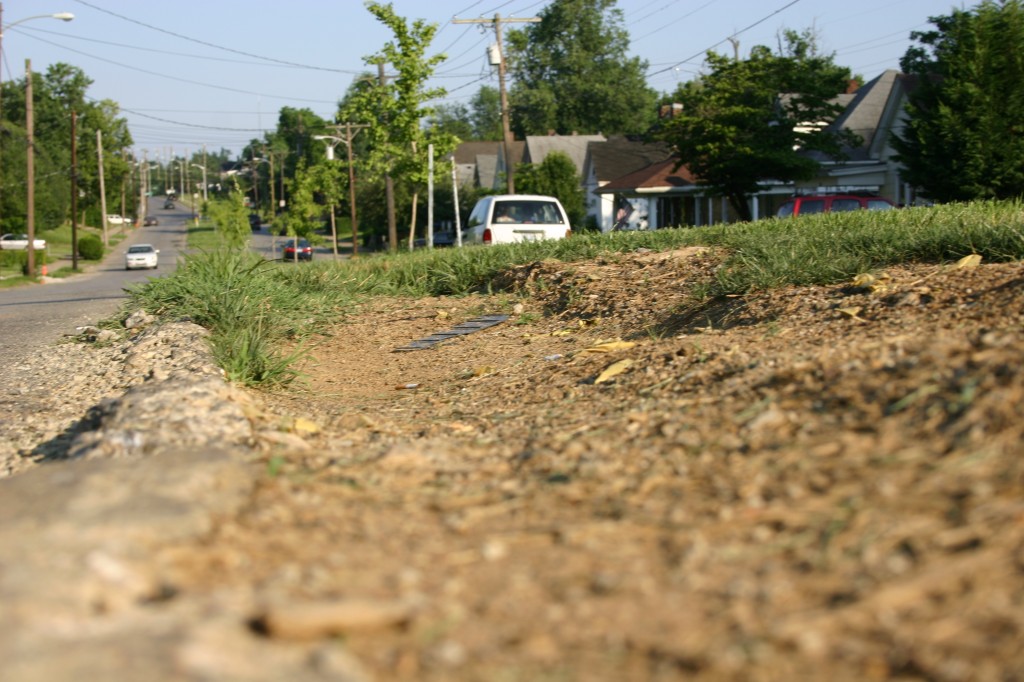Resources go downtown while northside residents struggle
NoC News
Out of growing concern about crime and violence, Castlewood neighborhood residents have started organizing. They’ve had meetings; they’ve got plans. At the center of those plans are two things: build strong relationships among neighbors and prod the city into finishing the renovation of E. Loudon Avenue.
As it stands right now, the condition of E. Loudon from Shropshire to Bryan is deplorable, making the area look like it has been abandoned by the city. The road surface is compromised, the curbs destroyed, the median in shambles. Along this stretch have also been the most dangerous incidents of crime, including the fatal shooting of 19-year-old Christopher Thongs in May.
Putting two and two together, Castlewood residents have begun to wonder just how much the infrastructure neglect in their area has contributed to the crime. Because they know that street design and general upkeep of an area can discourage destructive activity, Castlewood residents want that last stretch of E. Loudon renovated. But if you know the history of the work already done on E. Loudon, you have to wonder just how much work they’ll have to do themselves to get a decent street. The type of street that many neighorhoods take for granted: one with curbs and without sinkholes and buckling pavement.
A people’s history
There are two ways to look at the history of the already completed work on E. Loudon. From one point of view, it’s a citizen’s victory. From another, it shows how hard residents have to work to get the government (local, state, and national) to do its own job, part of which is to attend to infrastructure needs. From that same angle, it becomes easy to see how neighborhoods without certain resources of time and knowledge end up disadvantaged, with their streets crumbling, their homes losing value (which for those of modest income is their primary way to build wealth), and crime moving in.
So here’s the story: for 10 years, Castlewood’s neighbors to the east, Meadows-Loudon Neighborhood Association, labored to get major renovations done on the segment of E. Loudon running from Winchester Road to Shropshire Avenue.
That project, led by Larry Hamilton (then-president of the Meadows-Loudon Neighborhood Association) and supported by many other residents, drastically changed the face of the area. As Hamilton told the Herald-Leader in 2008: “It’s changing the perception, changing the image of this end of town. Before this road project, water was running down each side of the street, there were worn paths on each side of the street, and ruts in people’s driveways. It’s just a complete change…. This shows that, if people band together, we can achieve what we want.”
The rehabilitation of E. Loudon from Winchester to Shropshire included replacing sewers, resurfacing the road, adding streetlights, creating a bike lane, and other improvements. The project also extended to 10 side streets in the area.
Shouldering the load
So, E. Loudon looks great—until you hit Shropshire. From there, the street looks like it could be in a third world country. Now, residents in that area are seeing the repercussions: more drugs, more prostitution, more property crime.
And residents fear that it will take 10 more years of heavy lifting to get more than cursory, patchwork improvements on the street. While resurfacing of E. Loudon is a short-term fix (and something the shocks on residents’ cars would appreciate), what the street really needs is a complete streets design.
The question is, how much will residents have to do themselves? And, will the neighborhood be able to shoulder the load? If recent history tells us anything, Castlewood residents will probably have to do a lot—and, realistically, the project may ask for more energy and time than many ordinary citizens have in this grinding recession.
On the other hand, there doesn’t seem to be a shortage of enthusiasm directed toward overhauling downtown. The city is forking over plenty of dough for studies about re-doing Rupp and converting downtown streets to two-ways while near northside residents are having to fend for themselves when it comes to basic infrastructure needs. Makes you wonder where the priorities are.





Leave a Reply